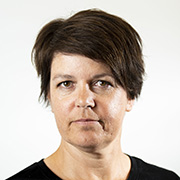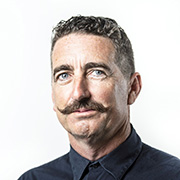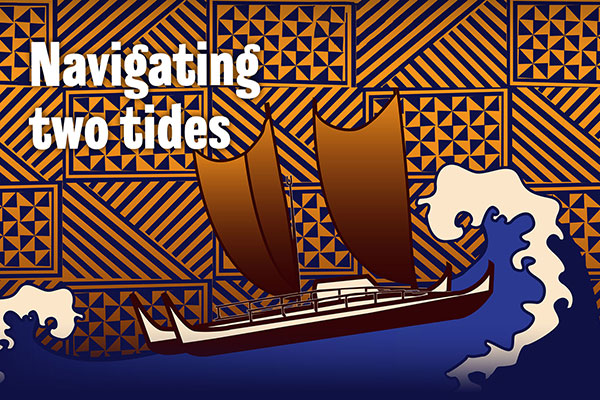
Descendants of the first marriages between Chinese and Europeans in New Zealand faced discrimination and hid their ancestry. Surnames were Anglicised or passed off as French. Women wore glasses and hats to disguise themselves. Now families are reclaiming their Chinese ancestry with pride.
Reporter Sally Kidson and visual journalists Virginia Woolf and Braden Fastier look at the incredible story of the first mixed marriages on the Otago goldfields.
Made with support from


For most of her 78 years Wendy McKay felt something was missing.
She always knew her granddad Hugh Chooquee was part Chinese.
But her family never discussed it.
“I just knew I couldn’t ask questions as mum had made it quite plain she didn’t want to talk about it,” Wendy says of her Otago upbringing.
Her granddad, Pop to her two older brothers, was much-loved.
“He was lovely,” McKay, a vibrant, fit retiree from Nelson, recalls.
But his ancestry - his father, Wendy’s great-grandfather, was born in Shanghai in 1833 and married a young girl on the Otago goldfields in 1869 - was strictly off limits.
“We lived with my granddad, but it never occurred to me that he was Chinese. He was just my granddad. And I loved him. And that was that.”
It is most likely the shame of being different in the conservative 40s and 50s was the reason the family’s Chinese links were not spoken about.
And decades later that still stings.

Chinese graves at Lawrence Cemetery, Otago.
Chinese graves at Lawrence Cemetery, Otago.
McKay’s life-long quest for information about her heritage took her back to Lawrence, the small Otago town where she was born, last year. And it would be, of all things, a family reunion that would fill in the missing pieces about her family’s past.





























Tuapeka Times 1869
On Monday morning a marriage at the Chinese Camp caused some sensation owing to the peculiar circumstances attending it. The bridegroom was a middle-aged Celestial and the bride a European child some 14 years of age (little past the age of infancy). It is hoped this disgraceful affair will be the first and last marriage of the kind in this district.
Drive 1.2km towards Queenstown from the rural service town of Lawrence and you reach its historic Chinese camp.
Yellow flags embossed with Chinese-styled dragons flutter along its Beaumont Highway boundary. The Clutha Gold Cycle Trail hugs it to the north.

Gabriel’s Gully - where Gabriel Read in 1861 is said to have seen "gold shining like the stars in Orion on a dark frosty night” - is close by. Nearby Lawrence with a population today of 450 was home to 11,500 people at the gold rush’s peak.
Only three buildings remain at the Lawrence Chinese Camp: a temple or Joss House, a stables, and the once bustling Chinese Empire Hotel.

A drone view of where the Historic Chinese Camp in Lawrence was during the Otago gold rush in the 1860s.
A drone view of where the Historic Chinese Camp in Lawrence was during the Otago gold rush in the 1860s.
But 160 years ago this camp, known as “Canton'' or “Hong Kong”, was an important gateway to the harsh Otago goldfields and was home to a substantial village of Chinese men hoping to make their fortune.
The camp included butcheries, a slaughterhouse, boarding houses, gambling dens and a brothel.
In its heyday it also hosted family life and festivities.

Adrienne Shaw, a fourth generation descendant of the camp and amateur historian, knows more about the Chinese Camp and its inhabitants than most.
Shaw talks a million miles-an-hour and her stories are a whirl of names, dates and anecdotes of the men who lived in the camp.
Some of the long dead Chinese sojourners wake her up in the middle of the night, bidding her to record their stories, and she talks of the men she’s researched almost as if they are alive.
The Chinese were given the swampy piece of land for the 1.2ha camp after the Lawrence Town Council banished them from living with the Europeans.
Another bylaw enforced a curfew on the Chinese so they weren’t out at night.
Historian James Ng, who has spent eight years compiling an exhaustive history of the early Chinese in New Zealand, says the Lawrence Camp was the biggest and earliest of the Chinese goldfield settlements.

Historian James Ng.
Historian James Ng.
It is one of the few places where Chinese and Europeans were openly in relationships - and that included several marriages.
At its peak, in the late 1880s, the camp was home to 120 residents including 25 to 30 mixed-race families and many children.
Shaw is working on a book on the first mixed marriages from the camp. Her dogged research is helping many with links to the camp uncover their family’s history.
Shaw’s great-great grandfather Chow Tie, (Chau Chu Taai,) a butcher at the camp, married her great-great grandmother Grace Kerr. The Scottish Grace was a barmaid at the Chinese Empire Hotel.
Grace, a staunch protestant, “didn’t have a problem” working for a Chinese man.
Shaw first heard stories of her Chinese ancestry when she was 8 or 9.
In a story common for many descendants of Chinese mixed marriages, Shaw had only had tidbits of oral history she heard as a young girl to decode her family.
Those who knew, now long dead, were reluctant to talk about it or ambivalent, she says.
“They brushed it under the table. They put it under the mat, they didn’t talk about it. They shut it down.”
The early Chinese were largely shunned by Europeans, and mixed-race children also endured racism, Shaw says.
“The papers called them ‘half-caste children - living in a sea of vice in the camp’.”
A letter in the Tuapeka Times shows the disdain the camp held, calling it a “great evil” and a cancer eating its way into the district's morality.
Descendants from first mixed marriages, many of whom shifted to Dunedin once the gold ran out, were socially mobile and often hid their heritage to get ahead.
“No one was proud of being Chinese,” Shaw says. “They covered their noses, wore glasses, and wore hats. No one walked around with it tattooed on their heads.
“If you looked Chinese well, you just had to live with it. If you looked a bit more European … you sort of had an easier life really.”
Names were Anglicised. Her family took her great-great grandfather’s first name of Taai and modified it.
“Half the family today are still running around with Tie and the other half are running around with Tye.”
She knows stories of descendants not finding out about their heritage until they were in their 60s.
Last year Shaw held a family reunion for more than 100 descendants of the mixed marriages from the camp. Many are now successful professionals, Shaw says with pride.
It is important to note that not all families have grown up carrying their ancestry with shame.
But others grew up thinking their modified surname was French. Discovering as adults they had Chinese heritage was shocking.
One attendee said all her school friends knew she was “Chinese”.
“The only ones who didn’t know they were Chinese in the whole district were us.”
There were many times during the reunion weekend Wendy just wanted to have a good cry.
But sitting in a room full of strangers she had to hold it together.
In the sterile surrounds of a funeral home (where part of the reunion was held due to Covid restrictions) - it was hard listening to the story of her great-grandmother.
It was a lot to take in.
Wendy’s great-grandmother Sarah Ann Austin, also known as Annie, caused quite a stir in 1869 when at the tender age of 14, and quite likely pregnant, she eschewed the strong social conventions of the day and married the much older George Choo Quee.
It was the first Chinese mixed-marriage in Otago and took place at the Lawrence camp.
George recorded his age at 29, when he was either 39 or 44, Shaw says.
The Tuapeka Times, in an article about the wedding, described Sarah as a “European child” “little past the age of infancy” and George as a middle-aged Celestial.
It labelled the union a “disgraceful affair”, hoping “it would be the first and last of its kind in the district”.
Shaw says Sarah arrived in Central Otago via the Victorian goldfields in Australia. Her family followed her uncles to Australia after they were sent to Hobart as convicts on charges of highway robbery, murder and obtaining a ferret by false pretences.
The Austins lived near the Lawrence camp, and Sarah had “taken an interest” in the men living there.
“She was a bit naughty,” Wendy laughs.
George, a miner cum store keeper was ordered to build a house in the Chinese camp for his wife.
The Choo Quee marriage, like many mixed marriages, was divisive. Chinese men were considered “alien” or “the yellow peril” and a bad match.
Perhaps, like other girls from tough working class backgrounds, Annie saw the more mature George as a way out of a life of domestic servitude, Shaw speculates.
For the Chinese, marrying a European, although frowned on, was their only option.
Most Chinese miners only intended to be in New Zealand for a short time, and many were already married in China.
The New Zealand Government’s informal white New Zealand policy also restricted entry for Chinese women in a bid to ensure they didn’t have children and build families in New Zealand, Ng says.
In 1881 there were 4995 Chinese men in New Zealand (the highest number prior to WW2) and only nine Chinese women.
Despite the salacious circumstances of Sarah and George’s marriage it was definitely one of the better matches.
Annie died aged 35 in Dunedin of cancer of the womb. Like many Chinese the family moved to Dunedin as the gold ran out.
George remained a loving father to their six children and the couple are buried together in Dunedin’s Southern Cemetery.
Other marriages and de-facto unions were more volatile and sad. Many were scarred with psychiatric problems, violence, alcoholism and the untimely death of children in the era’s harsh times.
“Overall the Chooquee family was a well-behaved one and did their best for their children, with some exceptions,” Shaw says.
“But there were other families that were in and out of the courts for shooting each other and chasing each other with broom sticks.
“The Seque kids got done for drunkenness. The mother Elizabeth Seque had illegitimate children to other Chinese men, you know, she was prone to debauchery. So yeah, the Choquees were a bit boring [in comparison].”
Canterbury researcher Julia Bradshaw says between 1865 and 1910 there were at least 43 Chinese-European marriages and probably as many de facto relationships.
The marriages were often financially tough as the Chinese sent money back to family in China, and the family was often subject to taunts and discrimination.
Brayshaw agrees almost all first generation children hid their Chinese ancestry.
Of the more than 146 Otago-born Anglo-Chinese children, their descendants are now likely to number in the thousands, she says.
Much like McKay, they are now embracing their history.
High in the hills 20km west of Alexandra, past farmland peppered with flowering purple wild thyme and spiky matagouri, is the abandoned mining site of Shek Harn.

There’s not many places in Central Otago with a Cantonese name still imprinted on the landscape, but Shek Harn, which means big ditch, is one.
Wild Chinese gooseberries grow near the crumbling remains of old stone huts used by Chinese miners 160 years ago.
But conditions must have been extra tough for the Chinese who kept to themselves and lived frugally in rudimentary shelters.
The first Chinese to arrive in New Zealand was Appo Hocton who jumped ship in Nelson.
But the story of New Zealand Chinese as a community really begins on the Otago Goldfields.

Chinese miners work the Otago goldfields. Credit: Toitū Collection
Chinese miners work the Otago goldfields. Credit: Toitū Collection
The Chinese were invited to New Zealand to solve a crisis on the Otago Goldfields by the Otago Chamber of Commerce when the majority of miners had left to chase gold on new goldfields.
Life was harsh on the goldfields, but conditions must have been extra tough for the Chinese who kept to themselves and lived frugally in rudimentary shelters.
Dr Ng said the average life expectancy for all miners was 30.
The Chinese were “sojourners”, from southern China who aimed to earn money and support families living in poverty in China
They arrived in 1866 and by 1886 numbered about 5000.
While some miners, such as the Dunedin merchant Sew Hoy prospered, many were unsuccessful.
They also attracted suspicion, jealousy and fear.

on every incoming Chinese person had been imposed and raised from £10 to £100.
on every incoming Chinese person had been imposed and raised from £10 to £100.
In 1881 the Chinese were made to pay a poll tax, or head tax, when they entered New Zealand. The poll tax started at 10 pounds - and increased to 100 pounds, about $18,000 today.
Other laws targeted at the Chinese included a cargo tax which limited the number of Chinese who could come to New Zealand and a reading test on arrival.
Drive two minutes from Lawrence and travel up Gabriel Rd and you get to the Otago town’s historic cemetery.
The European graves lie on land that gently slopes towards SH8.
But at the southern, swampy end where the Chinese graves lie it’s a lonelier story.
Many headstones are neglected or broken.

The European section of the Lawrence Cemetery.
The European section of the Lawrence Cemetery.

Compared to the Chinese graveyard.
Compared to the Chinese graveyard.
When Shaw first visited the cemetery in the 90s, graves lay neglected lost in knee-high grass or bush.
Researchers say at least 1000 Chinese were buried in New Zealand prior to 1900.
Many Chinese miners who died in New Zealand were later interned and taken back to China - including the bodies of 499 on the ill-fated SS Ventnor. But that’s another story.
Shaw has raised money to tell the story of these men and restore their headstones.
“I didn’t want them to be a rock in the mower.”
On a drizzly Sunday a group of descendants from the mixed marriages at the Lawrence Chinese Camp helped unveil the restored graves.

Alan McCord, who looks like a Pākehā from any small New Zealand town, addresses the “understandable but troubling” stories he has heard - including the fact many were brought up believing their heritage was French, not Chinese.
“Whether it was done out of shame or to protect their children this heritage needs to be acknowledged”, he tells the group.
For Wendy reclaiming her Chinese ancestry at 78 brings her joy and she now feels whole.

My heritage is mine now I know where I come from.
She’s never really spoken to her three children about her Chinese links but this has changed.
“I want them to know where we came from. I want them to understand a part of the history of the country. Because that is what it is.”
Projects like this take time and resources. Please become a Stuff supporter and help enable this type of work.
Getting to the truth takes patience and perseverance. Our reporters will spend days combing through documents, weeks cultivating delicate sources, and months – if not years – fighting through the Official Information Act, courts and red tape to deliver their stories.
By supporting Stuff you'll help our journalists keep the pressure on. Make a contribution from as little as $1 today.










